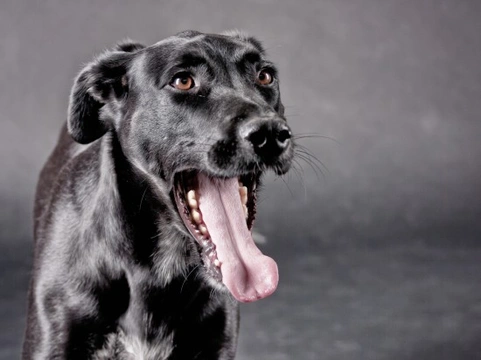
Decoding your dog’s calming signals
Dogs and humans speak two very different languages, and most of the time the domestic dog is expected to be the party that learns to understand human behaviour and moderate their behaviour accordingly, and not the other way around. While we are all familiar with the very basic dog communications and what they mean, such as raised hackles or a wagging tail, dogs have a much wider language than this when it comes to communicating their moods and their feelings.
One of the most important forms of communication for the dog is learning how to express calming signals, which ask another dog or person to cool things, back off, or relax a little. Calming signals can be a plea to another dog or person to stop behaving in a certain way, or to indicate to the other party that they are backing down and cooling off. Displaying calming signals can be both submissive and an invitation to the other party to moderate their behaviour, and learning to understand some of your dog’s calming signals can help to provide a better insight into their personality.
Read on to learn more about some of the most common but often overlooked calming signals that dogs display.
Turning the head
Dogs do not like to greet each other head on, as a face-to-face or nose to nose approach can indicate dominance or aggression, and face to face meeting is widely considered to be bad manners. If your dog turns their head away from you, it is easy to interpret this in the human context of showing ignorance or not listening, but it is actually your dog’s way of showing submission and requesting calm.
Averting the eyes
The same is true if your dog refuses to meet your eyes, breaks eye contact or will not look at you directly. Eye contact between people is considered to be a polite way of letting the other party know that you are listening and engaging with them, but in canine terms, it is often viewed as a challenge.
Freezing
You have probably seen this happen when your dog is approached by another dog; rather than getting involved in the sniffing and circling behaviour of the other dog, your dog may stand stock still for a few moments, letting the other dog sniff them and work their way around them first. This is a polite way of yielding to the other dog as “you go first,” before your dog gets involved in the sniffing and investigation too.
Licking their own nose
If your dog licks their own nose or lips, other than when they are anticipating food or smell something nice, this is a calming signal to invite the other party to calm down or take things down a notch if your dog feels uneasy.
Mock-bowing
When two dogs are playing together, you will often see one dog bowing down with their front legs in front of the other dog. This is a normal part of play and often, a part of role play in which the more dominant dog yields to the other dog, and is also a sign widely used to invite the other dog to calm down.
Lying down
Lying down in front of a person or another dog, particularly with the belly and neck exposed, is a submissive signal that the dog uses to say “I am not a threat,” and encourage the other dog to play nicely, or the person to accept their submission.
Yawning
Yawning is again another sign that between people, indicates tiredness or boredom with the conversation, and so can be considered as rude. But between dogs, yawning is a cue to the other party to tone things down, chill out and be calm, and is often used to break a stand-off or show friendly submission.
Curved posture
Dogs greeting each other and circling around each other often hold their body in a curved position, even when standing still. This posture both allows the dog to keep an eye on what the other dog is doing, and also to avoid appearing taut or tense, in the way that a head-on straight stance might do.
Scratching
If your dog suddenly starts scratching what seems to be an urgent itch when meeting another dog, they may not actually be scratching to relieve it! Scratching can also be a calming signal, as it gives the dog something to do that permits them to change their stance or break a stand-off without yielding full submission or losing face to the other dog. This behaviour can be compared to that of cats, when two cats are hissing at or swatting at each other, and then suddenly and with no obvious prompt start to groom themselves as if this is the most important thing on earth!
Scratching is a way of diffusing tension by giving the dog something to do and concentrate on, inviting the other dog to stop what they were doing at the same time.



